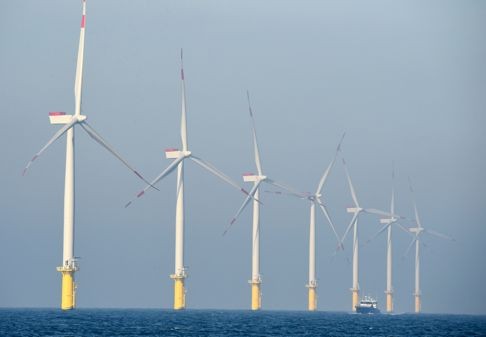
World power: Why China’s State Grid is charged up over global interconnection dream
State Grid Corporation is pushing for regional and intercontinental interconnection of power grids in the next few decades, despite the challenges to the grand vision to enable more efficient and environment-friendly energy consumption.
The vision, if realised, would bring ample opportunities for China to export its ultra-high voltage (UHV) power distribution technology and equipment amid the economic slowdown, and complement President Xi Jinping’s “One Belt One Road” strategy.
It could also see 80 per cent of the world’s energy consumption generated from clean energy by 2050, and a reduction of global carbon dioxide emission by half from 1990 levels so that global temperature rise can be controlled within two degrees centigrade and climate change averted.
This is according to State Grid chairman Liu Zhenya, who conceded selling the idea to the whole world is not easy.
“Someone in the United States had told me that the idea of global energy interconnection will not work because the US power grid system is different,” Liu told delegates of a forum in Hong Kong it organises to promote the vision.
READ MORE: China’s State Grid near deal for stake in Italian energy grid firm
“But technically, global interconnection is no longer a problem, we just need to upgrade our infrastructure ... in the future, nobody can resist the lure of imported interconnectivity-enabled cheaper electricity.”
He said excess wind power from the northwestern Xinjiang Uygur autonomous region can theoretically be exported to power-short Germany via some 6,000 kilometres of long-distance, high-capacity UHV power lines, on which State Grid has said it has achieved technological breakthrough and commercial success.
It has built seven such lines and plans to complete nine more in mainland China by the end of next year.
According to its research institutes’ estimates, it costs 8 US cents per kilowatt-hour to generate and send wind power to the Xinjiang grid, and 4 US cents to then send it to Germany via UHV lines.
The total cost of 12 US cents is half that of clean power generation cost in Germany, Liu said.
Liu said although the commercial viability of power transmission over such a long distance has never been proven anywhere globally, he is confident of its cost estimates, which he said are conservative.
Sergey Tulinov, an economics affairs officer of the United Nations’ regional development arm Economic and Social Commission for Asia and the Pacific, told the forum that barriers to State Grid’s global vision includes governments’ lack of political will, trade barriers, incompatible technical standards and lack of capital.
State Grid estimated it would cost US$50 trillion of clean energy generation and transnational power grid investments to realise its 2050 vision.
Last September, Xi told the United States Sustainable Development Summit that China will propose discussions on establishing a global interconnected energy network to facilitate efforts to meet rising global power demand with cleaner alternatives.
State Grid has since hosted a conference in Chicago last November and another one in Berlin last month, to facilitate dialogues on how to realise the vision and tear down political, technical and economic barriers.

The Hong Kong forum also seeks to address challenges in financing the grand plan.
Liu said State Grid’s vision can be realised in three phases. Until 2020, all nations are encouraged to develop clean energy, enhance interconnection of their power grids and upgrade them so that they become “smarter” and more efficient through the collection and analysis of power consumption and production data.
Between 2021 and 2030, cross-border interconnections are envisioned, and cross-continental interconnections are hoped for between 2031 and 2050.
Separately, asked why State Grid’s 439 billion yuan budget for power distribution infrastructure construction this year is 2.9 per cent less than last year’s actual spending, Liu said it was due to short-term year-by-year project outlay allocation differences and does not represent a trend.
The electricity behemoth, which is the sole distributor of power in all but five of the nation’s provinces and regions, plans to spend 2.3 trillion yuan between this year and 2020, up from 1.8 trillion yuan spent between 2011 and 2015, he said.

